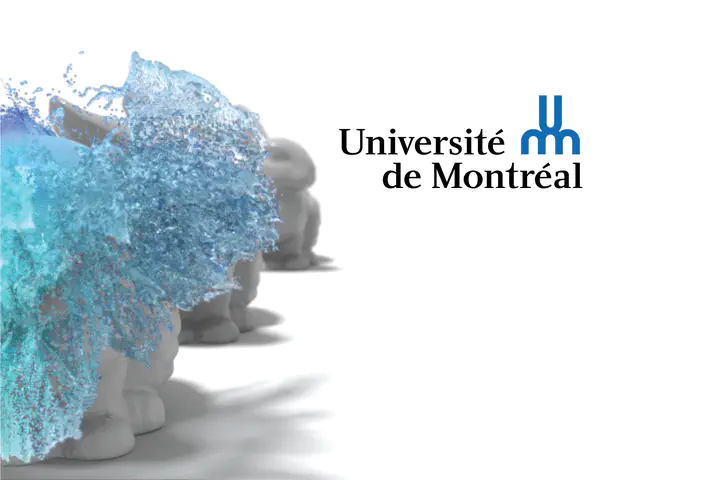Hybrid and Data-Driven Methods for Efficient and Realistic Particle-Based Liquid Simulations
 Image credit: Unsplash
Image credit: Unsplash
Abstract
The approximation of natural phenomena such as liquid simulations in computer graphics requires complex methods that are computationally expensive. Despite recent advances in this field, the gap in realism between a simulated liquid and reality remains considerable. This disparity that separates us from the desired realism requires numerical models whose complexity continues to grow. The ultimate goal is to provide users the capacity and tools to manipulate these liquid simulation models to obtain acceptable realism. In the last decade, several approaches have been revisited to simplify and to allow more flexible models. In this dissertation by articles, we present three projects whose contributions support the improvement and flexibility of generating liquid simulations for computer graphics. First, we introduce a hybrid approach allowing us to separately process the volume of non-apparent liquid (i.e., in-depth) and a band of surface particles using the Smoothed Particle Hydrodynamics (SPH) method. We revisit the particle band approach, but this time newly applied to the SPH method, which offers a higher level of realism. Then, as a second project, we propose an approach to improve the level of detail of splashing liquids. By upsampling an existing liquid simulation, our approach is capable of generating realistic splash details through ballistic dynamics. In addition, we propose a wave simulation method to reproduce the interactions between the generated splashes and the quasi-static portions of the existing liquid simulation. Finally, the third project introduces an approach to enhance the apparent resolution of liquids through machine learning. We propose a learning architecture inspired by optical flows by which we generate a correspondence between the displacement of the particles of liquid simulations at different resolutions (i.e., low and high resolutions). Our training model allows high-resolution features to be encoded using pre-computed deformations between two liquids at different resolutions and convolution operations based on the neighborhood of the particles.
Supplementary notes can be added here, including code, math, and images.